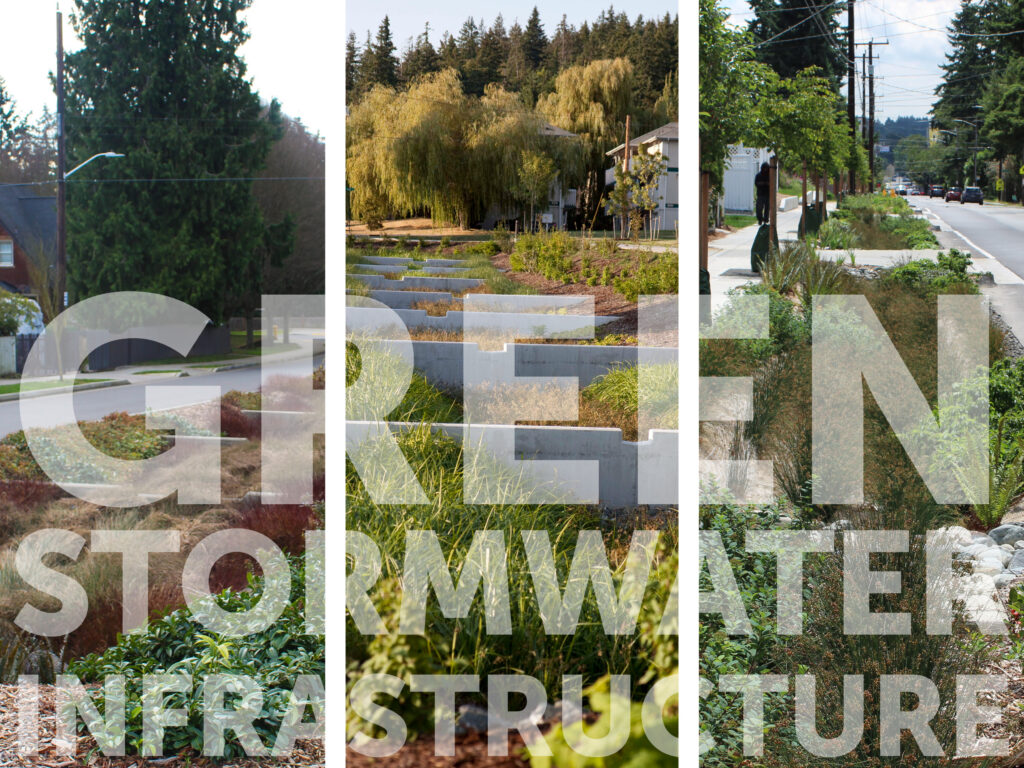More than two decades have passed since Seattle’s pilot Street Edge Alternatives Project (SEA Streets) was completed in 2001, the first public right-of-way Green Stormwater Infrastructure (GSI) retrofit of its kind in the US. Since then, the benefits of GSI have been time-tested and proven in cities around the world. Although treatment technology and implementation strategies have adapted over time, one thing has remained staunchly true through the history of GSI design – community-informed urban design is key.
Driving through the diverse neighborhoods of Seattle, you can immediately tell when a street has been designed with GSI – even if you have no idea what that is! More abundant trees and plants, roadways separated from sidewalks, maybe a sign describing what is happening underground, all indicators that GSI is doing its job to treat and infiltrate stormwater. Unlike piped stormwater conveyance, these surface elements have major visual and logistical impacts on the community members that live, walk, and drive through GSI-enhanced corridors.
As engineers, it’s easy to set our sights on the most effective engineered solution based on modeling to treat the highest volume of stormwater. But with GSI, we need to consider so much more, from driveways and mailbox locations to the varied uses of the right-of-way, which are unique for every street. We can have the most accurate modeling in the world, but that won’t tell us if a particular street we’ve targeted for bioretention cells is the only one in six blocks with available street parking. This is why stormwater engineers must work hand-in-hand with the community and experienced landscape architects and urban designers to integrate GSI in a way that not only achieves the water quality benefits, but also improves the lives of those who live with it on their street.
Osborn Consulting is currently leading the urban design for Seattle’s Broadview 12th Ave NW Drainage Improvement Project. Early engineering solutions (not designed by Osborn Consulting) drove the project to consider north-south blocks for GSI, however after engagement with the community by our Landscape Architecture and Urban Design team, many challenges were identified that resulted in adjusting the GSI locations. Liz Browning, our Landscape Architecture and Urban Design Practice Lead, recently went on site with staff from Seattle Public Utilities to understand and collect valuable feedback from the community, in continued efforts to ensure this project will align with the unique character and usage of their neighborhood, to provide benefits beyond stormwater treatment.
This approach to community involvement to inform GSI solutions harkens back to one of the first projects that our engineers and landscape architects worked on together before Cascade Design Collaborative joined with Osborn Consulting. For the Seattle Public Utilities Venema Natural Drainage System project, Tarelle Osborn, Kas Kinkead, Robert Parish, and others worked collaboratively to gather input from the neighbors by going door to door to inform the location of bioretention cells and even what types of plants would be in the cells in front of their homes.
When asked about what their favorite project has been to work on, many of our team members speak fondly of Venema and the other GSI projects we’ve been fortunate to design. From our early days as a company, we’ve enjoyed the puzzle of finding practical and creative GSI solutions that improve our environment and our local communities.







